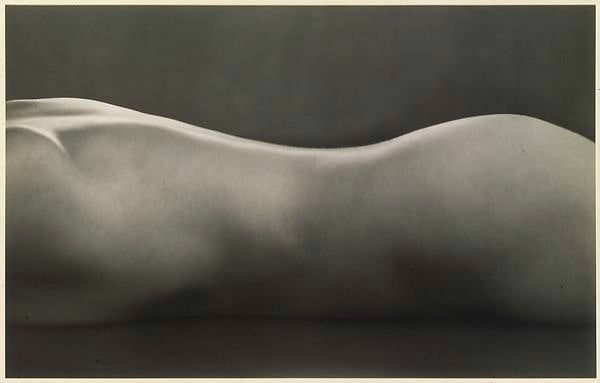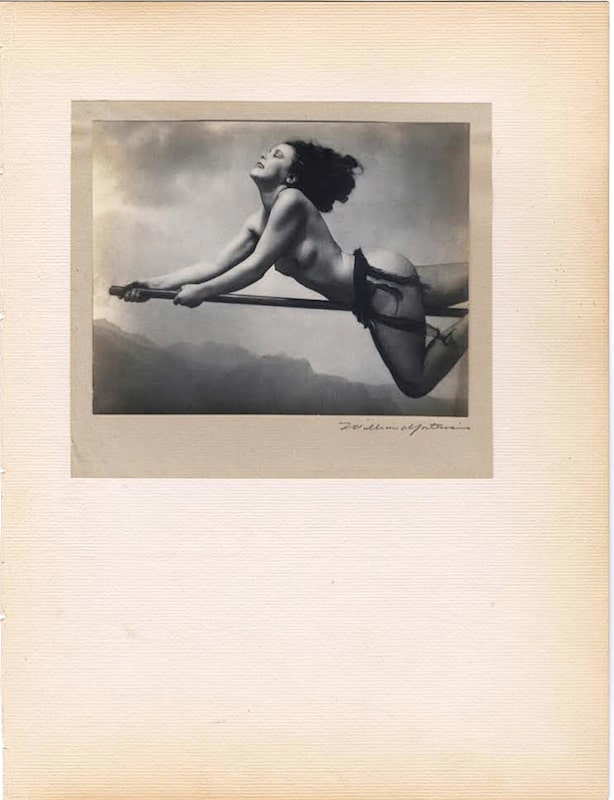
The idea of sending and selling nude photographs may seem to be a contemporary idea, many famous photographers captured nude images. The saying “sex sells” is cliché, but it does hold a great deal of truth. These photographers were artists, who found ways to elevate the photographed nude beyond purely pornographic imagery by meshing sexually charged images with artistic themes.
1. Oscar G. Rejlander: One Of The First Victorian Photographers

Oscar G. Rejlander utilized the nude image as an avenue to explore the allegory of vice and virtue in his moral work, Two Ways of Life. The final product looks like a single, composite image but it actually consists of multiple negatives, meshed together to create one story, sort of like a proto-Photoshop.
Two Ways of Life portrays a society that sees the decision between sexuality and purity as something that affects every aspect of a person’s life. Rejlander utilized actual nude photographic imagery to confront concepts of purity, taking the nude from pornography to an artistic tool.
2. Alfred Stieglitz: Pioneer Of Mainstream Photography

Pictorialist photographers like Alfred Stieglitz captured nudes, often of his lover and famous artist Georgia O’Keeffe, with emphasis on artistic aesthetics such as tonality, composition, and the beauty of the subject matter.
Pictorialists were not focused on documenting reality, as would be expected with a photographic medium. Pictorialist nudes were comparable to Renaissance paintings, just utilizing a camera instead of a paintbrush.
Get the latest articles delivered to your inbox
Sign up to our Free Weekly Newsletter
3. Edward Weston: Innovator Of 20th-Century Photography

On the other hand, during the 1920s, Edward Weston was working with the female nude in a different way than these Pictorialist photographers. Using extreme clarity and detail, Weston captured the female nude in a blunt, straightforward manner.
Weston often captured nude bodies in contorted, unnatural shapes for aesthetic purposes. Westons’s Nude, pictured above, captures the side of a female torso with no visible limbs. This image connects to themes of the surrealist movement which involve the manipulation of the female form through similar limb “amputations” and other distortions.
4. Horst P. Horst: High-Fashion Photographer

Another famous photographer, Horst P. Horst captured the thriving fashion scene in Paris. He worked for different clothing lines to help sell their products. The photograph titled, Mainboucher Corset simply depicts a woman putting on her corset but the lighting, swayed body, and the draping laces add sensuality to the composition and to the corset itself.
Adding an element of sexuality to an object that is for sale is not accidental. It is a successful sales technique that causes viewers to not only pay attention to the object being sold, but to also increase a subconscious desire to purchase it.
Sexuality is often included in advertisements, and this is by no means a new development. It can be traced from the onset of photography into contemporary culture and advertising.
5. Brassaï: Capturer Of Parisian Life

Brassaï photographed the underground nightlife scene in Paris. His subjects were often part of the fringes society: prostitutes, drag queens, and other members of the LGBTQA community. Without capturing blatant acts, his images demonstrate a sort of voyeuristic feel, the photographs seem to quickly peek into a private moment. Anything beyond that glimpse is inferred. The photograph, Bijou of Montmartre (1932) captures a transgender person which was considered very taboo at the time given such a blatant disregard for gender norms.
6. Robert Heinecken: Radical ‘Paraphotographer’

Robert Heinecken believed that every photographic image was already in the world so the only way to make a photograph your own art was to manipulate it. His art combined nudes with popular culture by meshing them together into composite images. Heinecken mixed images from pornographic magazines with popular, newsstand ready magazines like Vogue. His artistic goal was to confront media and demonstrate the similarities between pornographic magazines and advertising, fashion, and even political propaganda.
7. William Mortensen: Hollywood Glamor Photographer

William Mortensen took nude photographs that looked more like paintings than what they were. He puts them into a composition with a fully realized story that was often very erotic and exuding sexuality. His photographs sold much greater quantities than the other artists of his time which could speak to consumer’s desire to purchase sexually charged objects. The added elements of BDSM related themes could have also increased their desirability given the extra layer of taboo. Even photographers, Ansel Adams called him the “Anti-Christ” for his dark, sexual imagery.






